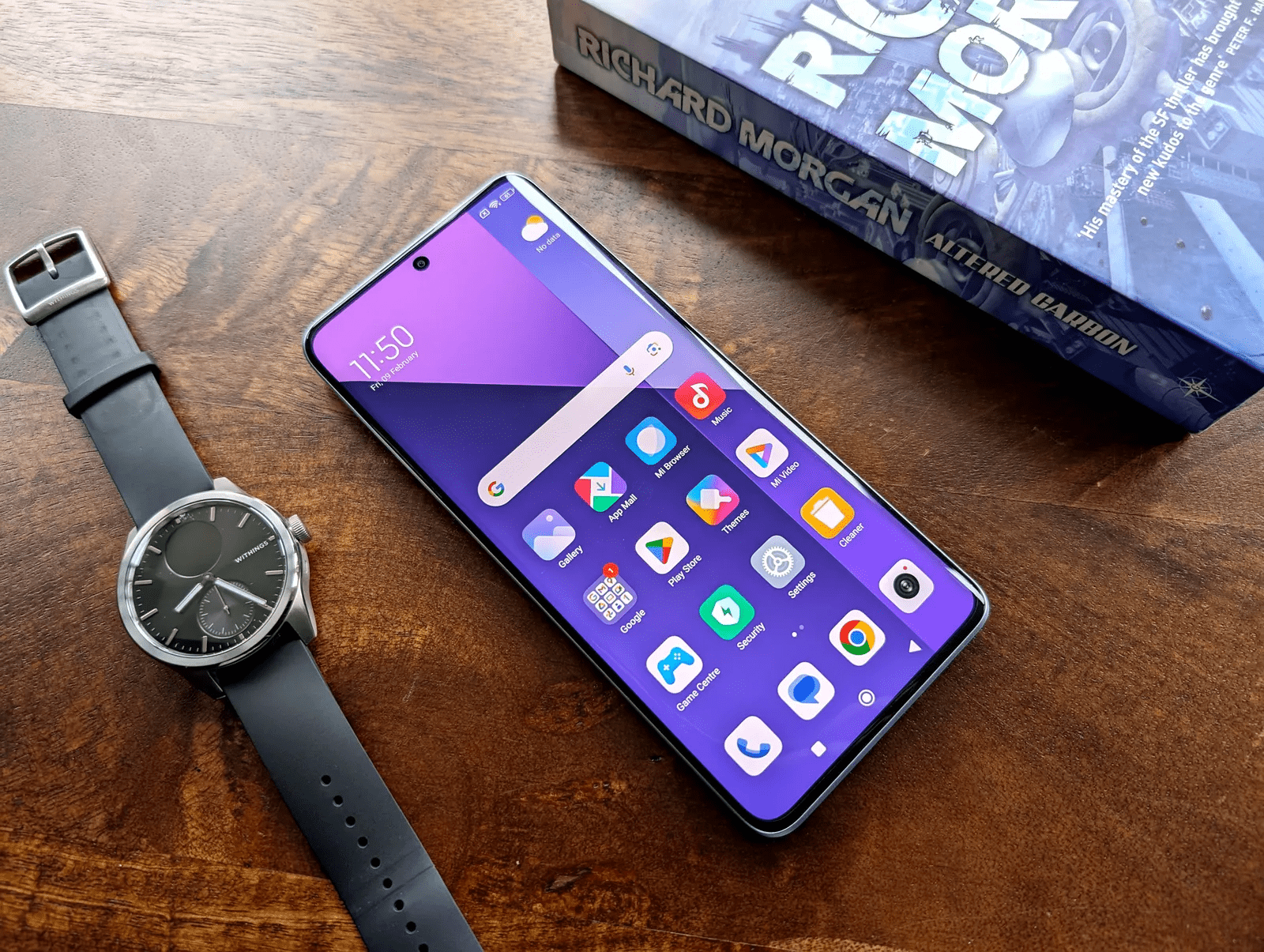Mid-range phones are constantly tightening the gap with top-tier phones. There are still plenty of pricey flagship phones, but with ever-diminishing returns. How useful are the unique features you find in today’s flagships? It’s debatable. Xiaomi’s Redmi Note 13 Pro Plus is a prime example of a mid-ranger that can go toe-to-toe with far more expensive devices.
The Xiaomi Redmi Note 13 Pro Plus looks lovely, has an excellent display, performs smoothly, and comes with ample storage. The camera is solid, the phone charges rapidly, and it is durable and waterproof. Sure, the auxiliary cameras are weak, there’s no wireless charging, and you have to put up with Xiaomi’s software, but you can’t have everything. At £449 in the UK or €499 in Europe, the Redmi Note 13 Pro Plus is relatively affordable.
Ravishing Redmi Note 13 Pro Plus
Phones have gotten dull in the design department, and mid-rangers are often downright generic. However, the Xiaomi Redmi Note 13 Pro Plus is a looker. It may be a familiar curved glass sandwich with a metal frame, but it’s also slim and sleek. My Aurora Purple review unit has a lovely matte effect on the back with an interesting geometric flourish at the top, and subtle tone changes marking out the pronounced camera lenses on one side and the flash and Redmi logo on the other. It made me crave a slice of Battenberg. You can also opt for black or white, but the purple looks best.
A SIM tray and USB-C port are located on the bottom edge, and the usual power button with volume rocker is situated above it on the right spine. There is no 3.5-mm audio jack (the lesser Note 13 models still have one). The 6.67-inch AMOLED display is beautiful and houses a fingerprint sensor at the bottom and a front-facing camera cutout at the top. I found the fingerprint scanner to be mostly responsive, but I occasionally had to press my thumb down more than once for it to unlock.
The display supports a 120-Hz refresh rate for silky smooth action, but it defaults to 60 Hz and is not scalable. (Displays that can scale up and down to 1 Hz use less power.) The screen is sharp and bright, and it can reach 1,800 nits peak brightness for highlights. I didn’t have any issues reading it outdoors. There is support for Dolby Vision and HDR10+. Movies and games look good, and there are decent stereo speakers, though you are better off connecting headphones or earbuds via the supported Bluetooth 5.3.
Happily for a phone in this price category, the Xiaomi Redmi Note 13 Pro Plus scores an IP68 rating, so there’s no need to worry about dust or water. There’s also Corning Gorilla Glass Victus to protect the display. These are two areas where midrange phones often compromise.
Buy the Xiaomi Redmi Note 13 Pro Plus in the UK, and you get a generous 12GB of RAM and 512GB of storage. It has a MediaTek Dimensity 7200-Ultra processor inside, which falls short of some competitors on paper, though I had no issues with it. There were no stutters as I switched from web browsing to email to recording video. It got a little warmer after a long gaming session of Dead Cells, but the frame rate was solid.
Battery life is good, and the Xiaomi Redmi Note 13 Pro Plus made it through busy days without dying. You could maybe squeeze two days between charges with light use and no gaming. After 20 minutes of racing in Asphalt 9: Legends, the battery dropped by 6 percent. The battery is rated at 5,000 mAh and can be fully charged from dead in around half an hour with the 120-watt charger in the box.
Camera
The triple-lens camera system on this device presents a mixed bag. The primary shooter boasts a 200-megapixel resolution with an f/1.65 aperture, a large 1/1.4-inch sensor, and optical image stabilization (OIS). By default, it employs 16-in-1 pixel binning to generate higher-quality 12.5-megapixel shots, but you also have the option to capture 200-megapixel images within the camera application. The 2X and 4X zoom lenses merely crop images from the primary lens.
Daytime photographs captured with the primary camera exhibit ample detail and a pleasing depth of field. However, exposure is not always accurate, and colors can occasionally appear oversaturated. A warm, pinkish hue is noticeable in several of the images I took. You can achieve a subtle bokeh effect by tapping to focus on your subject, and a portrait mode is available for a more pronounced background blur. As the sun sets, noise becomes more apparent, and bright areas can become overexposed. However, night mode performs reasonably well when held steady.
Unfortunately, the primary camera is accompanied by a mediocre 8-megapixel ultrawide lens and a virtually useless 2-megapixel macro lens. The ultrawide lens produces images with slightly cooler colors, but it exhibits significantly more noise than the primary camera and struggles in low-light conditions. I fail to discern the purpose of the macro lens, as it consistently generates unfocused, low-resolution shots. The primary camera captures superior close-ups.
Despite the underwhelming secondary cameras, most users will likely rely primarily on the main shooter. The device also features a respectable 16-megapixel front-facing camera for selfies and video calls. The highest video quality option is 4K at 30 frames per second, or you can choose 1080p at up to 240 frames per second. The videos I recorded appeared reasonably smooth and sharp.
Software
Beyond the inconsistent camera, the other major compromise here is the software. The Xiaomi Redmi Note 13 Pro Plus runs Android 13 out of the box, with Xiaomi’s busy and frustrating MIUI on top. I would have preferred Xiaomi’s revamped HyperOS over Android 14, as you get with the Xiaomi Poco X6 Pro (7/10, WIRED Review). You get three years of Android updates and four years of security patches with the Redmi, which is the minimum we would expect.
Bloatware is an issue, with a host of apps and games that you will likely want to uninstall immediately. But the phone comes with Google’s Play Store out of the box and will happily accommodate your favorite apps, with plenty of storage available. The Xiaomi Redmi Note 13 Pro Plus supports 5G and worked just fine here in the UK, but check the specs page for bands. It also supports Wi-Fi 6, rather than 6E or 7, but that will suffice for most people.
Ultimately, the Xiaomi Redmi Note 13 Pro Plus is a solid option for the money. The biggest quandary I see for shoppers looking at the Xiaomi Redmi Note 13 Pro Plus is that the comparable Xiaomi Poco X6 Pro is almost £100 cheaper. In this price bracket, you should also consider Google’s Pixel 7A (8/10, WIRED recommends) and Samsung’s Galaxy A54 5G (8/10, WIRED recommends). You can find more options in our Best Android Phones guide.


